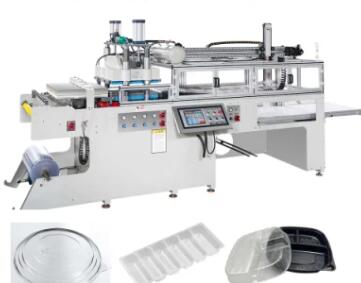Bridging Scales: The Versatility of Plastic Machinery in Small-Scale and Large-Scale Production
2024-01-05
Introduction:
Plastic machinery plays a pivotal role in the manufacturing sector, serving as the backbone for the production of a vast array of plastic products that permeate our daily lives. One remarkable characteristic of modern plastic machinery is its adaptability to diverse production scales. Whether in the realm of small-scale enterprises or large-scale industrial facilities, plastic machinery proves to be a versatile and indispensable asset. In this blog, we'll explore the ways in which plastic machinery can seamlessly transition between small-scale and large-scale production, catering to the unique needs of both sectors.
1. Injection Molding Flexibility:
Injection molding, a fundamental process in plastic manufacturing, showcases remarkable flexibility. Modern injection molding machines can be adjusted to accommodate different production volumes. This adaptability makes them equally suitable for crafting prototypes in small batches or churning out millions of units for large-scale production.
2. Customization Capabilities:
Plastic machinery excels in customization, allowing manufacturers to tailor production runs to meet specific requirements. Whether it's a small, specialized order for niche markets or a large-scale production run for mass consumption, plastic machinery can be configured to deliver products that align with diverse specifications.
3. Scaling Extrusion Processes:
Extrusion, another prevalent plastic manufacturing technique, is easily scalable. Extrusion lines can be configured to handle varying production volumes. This scalability makes extrusion suitable for both small-scale operations, such as custom profile extrusion, and large-scale endeavors, like producing extensive lengths of pipes or sheets.
4. Adaptable Blow Molding:
Blow molding, commonly used for producing bottles and containers, is adaptable to different production scales. Small-scale blow molding machines cater to niche markets and boutique businesses, while large-scale blow molding systems can churn out thousands of containers per hour to meet the demands of major consumer brands.
5. Modular and Compact Equipment:
The availability of modular and compact plastic machinery has further facilitated its use across different scales of production. Small-scale enterprises with limited space can benefit from compact machines that offer a range of functionalities, while large-scale facilities can deploy modular systems to handle diverse production needs efficiently.
6. Cost-Effective Prototyping:
Plastic machinery is instrumental in cost-effective prototyping, particularly for small-scale production. The ability to create molds and prototypes quickly allows entrepreneurs and innovators to test concepts before committing to large-scale manufacturing, minimizing risks and optimizing resources.
7. Automation for Efficiency:
Automation is a key feature in modern plastic machinery, enhancing efficiency and making it viable for both small and large-scale production. Automated systems can be integrated into compact machines for small-scale operations or deployed across multiple units in large-scale facilities to achieve consistency and speed.
8. Material Handling Adaptability:
The adaptability of plastic machinery extends to material handling systems. Small-scale production units can utilize manual or semi-automated material handling, while large-scale facilities benefit from fully automated and sophisticated logistics solutions for seamless raw material flow.
9. Quick Changeover Capabilities:
Many modern plastic machines are designed with quick changeover capabilities. This feature is particularly advantageous for manufacturers who need to switch between different product specifications or colors swiftly, accommodating the dynamic demands of both small and large-scale production.
Conclusion: A Unified Approach to Plastic Manufacturing
The adaptability of plastic machinery is a testament to its versatility and the dynamism of the plastic manufacturing industry. Whether operating on a small scale to meet niche demands or on a large scale to satisfy mass markets, plastic machinery serves as a unifying force, enabling manufacturers to navigate the diverse landscape of production requirements. As technology continues to evolve, the bridge between small-scale and large-scale plastic manufacturing will likely become even more seamless, ushering in a new era of innovation and efficiency.



